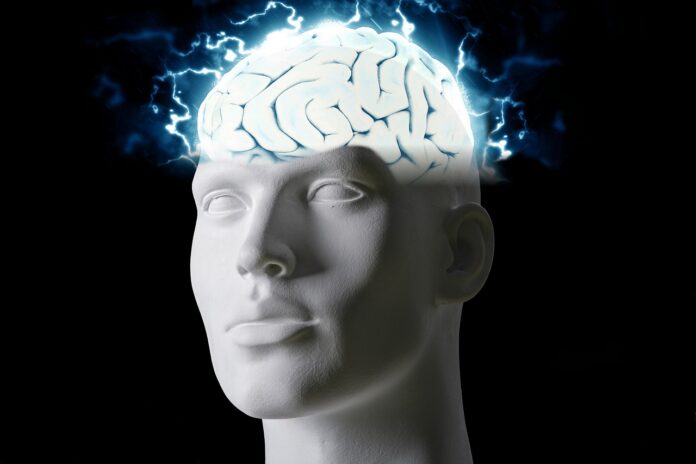Joule discovered in 1840 that the ‘calorific effects of equal quantities of transmitted electricity are proportional to the resistances opposed to its passage.’ Joule heating is a function of charge flow friction within a conductor, and resistive heat generation is independent of energy storage within capacitive or inductive circuit elements.
As a result, all nervous system stimulation generates heat in the electrical components and neural conductors through which electrical current flows. The effects of neural stimulation are commonly related to induced electrical currents and potential gradients rather than thermal effects. However, the thermal effects of stimulation are always present.
Last summer, devastating wildfires raged across Siberia, Alaska, and Canada’s frozen regions. They were partly caused by rising global temperatures, which accelerated bacteria’s ability to metabolize plant and animal matter in the soil.
These environmental conditions illustrated a fundamental physics principle: temperature is a key factor in chemical reactions. Even tiny variations can have disastrous effects, even in subzero temperatures. A wildfire can start if you heat a Siberian peat bog more quickly than it can release carbon into the environment.
Researchers have discovered that this environmental phenomenon’s physics also relates to brain activity. They also found that even minor temperature increases while stimulating the brain can deeply alter brain activity with negative consequences.
Steven Schiff, MD, vice chair for global health in Neurosurgery at Yale School of Medicine, specializes in the intersection of engineering and neurosurgery, allowing him to apply physics principles to biological processes in the brain.
All forms of electric and magnetic stimulation of the brain deposit thermal energy there because activity in wires generates heat. According to Schiff and his co-authors, temperature changes in the brain must be caused by electric brain stimulation devices like Deep Brain Stimulation, which are utilized in patients with epilepsy and Parkinson’s disease.
The firing of neurons is also affected by temperature changes in the brain. Molecular pumps line the membranes of nerve cells, electrically charging them with the energy released during brain activity. The researchers demonstrated that if cells are heated faster than the charges can adjust, they may produce more or less neuronal activity than usual. Even minor temperature changes caused by electrical stimulation of the brain (less than 1oC) can cause significant changes in neuronal activity. Neurons can go silent as they warm up. They can become very excited if you allow them to cool back down to their average temperature.
Schiff, the lead author of the study, said, “Seeing these dramatic effects on brain activity from small changes in temperature means that we now need to take such small temperature changes into account,”
“Long ago, physicist James Joule taught us there is no way around this problem. When electrical current is passed through small conductive wires to generate electrical or magnetic fields to stimulate the brain, heat is generated in both the wires and the conductive brain.”
William Stacey, MD, Ph.D., associate professor of neurology and biomedical engineering at the University of Michigan, said, “This paper is a true tour de force of combining different physical behavior models to re-examine some “old standards,”
“The combination of modeling with clever experimentation provided the very intriguing and unexpected result that heat might suppress neural firing. This model could also provide some novel methods for manipulating neural activity.”
Goldenholz said, “He would be very interested to see how Dr. Schiff’s findings are applied in the future for seizure treatment and neuromodulation,”
The findings were also important to Daniel M. Goldenholz, MD, Ph.D., assistant professor of epilepsy at Harvard and author of a recent paper on why focal cooling is essential for the future of treating focal epilepsy. Dr. Schiff and his team highlight the importance of temperature changes in brain tissue. It will likely be relevant in treatments of epilepsy that may include focal cooling. These fluctuations must be better understood and accounted for to improve their therapies’ accuracy.
This paradigm-shifting paper was presented in December 2022 at the American Epilepsy Society meeting in Washington, DC, and was well received.
It remains to be seen how these temperature changes affect the patient and how they can be used to improve outcomes. Surgeons have previously observed in clinical settings that a common side effect of implanting nervous system stimulators is that the activity of the stimulated brain often decreases with either electrical or magnetic stimulation.
The paper provides a convincing explanation for this phenomenon. According to Dr. Schiff, It could help clinicians calibrate the usage of these devices more accurately.
The results show that Although electrical interaction with brain tissue is inseparable from thermal effects when electrodes are used, magnetic induction allows everyone to separate Joule heating from induction effects by contrasting AC and DC driving of magnetic coils using the same energy deposition within the conductors.
Journal Reference:
- TaeKen Kim, Andrew J Whalen et al. Thermal effects on neurons during stimulation of the brain. Neural Engineering. DOI: 10.1088/1741-2552/ac9339
